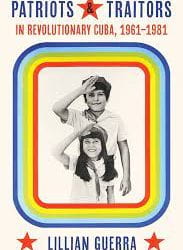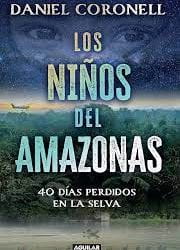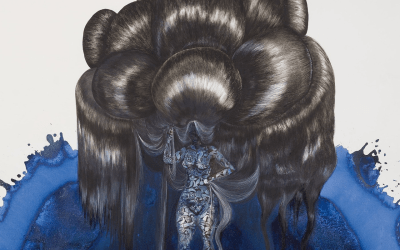A Review of Violencia pública en Colombia
Leviathan and the Billy Goat

Violencia pública en Colombia By Marco Palacios Bogotá, Fondo de Cultura Económica, 2012, 218 pages.
Another book about violence in Colombia? At first glance, it would seem superfluous to add one more title to the already extensive bibliography that spans the “violentology” dating from the 1960s and 1980s up to an endless number of recent studies on the armed conflict. Moreover, Colombia moved abruptly from the denial of the existence of a low-intensity conflict during the Uribe government to a rhetoric of post-conflict under the Santos administration: until just a few months ago the conflict seemed to have left the public agenda.
However, this is precisely why this book by Marco Palacios is important—even necessary. Conceived as an “interpretive synthesis in historical perspective,” it places the unresolved knots of Colombia’s past at the center of the debate: concentration of land ownership in large estates, continuities between colonial-era contraband and contemporary illegal trafficking, issues of domestic agricultural colonization and the persistence of clientelism in the nodes of the power network.
In contrast to the tendency of present-day historiography to focus on case studies and local situations, Palacios still dares to present a wide-ranging narrative of what has transpired in Colombia during the past six decades.
A powerful metaphor recurs throughout the book, like Ariadne’s thread that permits readers to orient themselves in the labyrinth of the Colombian conflict: that of the “imaginary Leviathan.” Palacios writes, “The monster that Colombians face is not Thomas Hobbes’ Leviathan, which requires that all be equal before it, but an imaginary Leviathan, precisely because this environment of equality does not exist nor has ever existed in Colombia.”
What is at stake is the question of the legitimacy of the Colombian state and its corollaries, control of territory and monopoly of the use of force. If from the beginning of the Republic the dominant classes adopted the Anglo-Saxon political myth of Leviathan as their own, their practices have reflected more those of The Billy Goat. In that work, Juan Rodríguez Freile, a Bogotá writer contemporary with Hobbes, “relates archetypical situations of a conquered society already in the process of colonization. A society forged by parasites who make their living from the exploitation of indigenous people and black slaves brought from Africa, whom they have subjugated culturally and politically, basing their domination on a fictional theory of state and a faraway king” (p. 38).
Since then, Colombian public violence has fed on the struggles between these two mythical monsters: an imported Leviathan and a creole Billy Goat. “The central point of reference,” continues Palacios, “is the national state as seen in a double tension: first, that of the raison d’etat ‘reason of state,’ baroque and colonial in nature, and that of rule of law, the functioning of which is prefigured in 1819-1821; second, [the tense] functioning of the Colombian state (1958-2010), with its flagrant deficit of legitimacy and sovereignty throughout the national territory and in the international system” (p. 21).
In this fashion, Palacios moves beyond the interminable debates about a weak state—failed or the verge of collapsing. The comparison of the Billy Goat with the Leviathan gives a literary-philosophical platform to his theory about “three countries”: 1) “islands of legitimacy” in the metropolitan areas, where two-thirds of the population live today under the protection of Leviathan; 2) scarcely populated colonized zones where the agricultural countryside frontier continues to exist under the control of the illegal armed actors, equivalent to the Hobbesian state of nature; and 3) the rest of Colombia, “a country in the middle,” made up of small municipalities caught between forced urbanization and negotiation with actors outside the law: the kingdom of the Billy Goat.
The crux of the book involves the dynamics of the armed confrontation between the dominant classes and their allies, on the one hand, and the guerrilla elite on the other. Instead of thinking about the state and social aspects of the nation and the world as dichotomies, but rather as organic and continuous, Palacios manages to systematically connect domestic events with international geopolitics. The ups and downs on the battlefronts related to the difficult Colombian geography, for example, are analyzed in terms of changes in the trafficking routes of arms, drugs and other contraband that connect the country with the United States and Europe.
Likewise, the statistical study of official police reports reveals a new terminology starting in 2002: “narco-terrorists,” incomprehensible if one does not associate the term with the global appearance of the post 9/11 “war on terror.” The fictitious Leviathan of domestic policy is thus inserted into the hemispheric hegemony of the United States, “Leviathan of the unsheathed sword” (p. 191).
Although the pages devoted to a comparison between Colombia and Mexico are but echoes of previous works by the author, the strength of the book is undoubtedly the global extension of his narrative, based on rigorous treatment of the empirical material at his disposition.
Another thesis already developed in Palacios’ previous works also reappears: Colombia is practically unique among Latin American countries because it has not experienced populism, whether leftist or right-wing. The movements that could be described as populist—such as those voiced by Jorge Elicier Gaitan and even Álvaro Uribe, as well as certain drug traffickers—have given in to internal contradictions or repression/cooptation of its members. The “oligarchical republic” never let go of the reins of power based on a liberal representative model oiled by a capillary system of favors and privileges, in which legalistic-civic traditions coexist with the systematic use of political assassination and arbitrary confiscation of property. Because of this, direct election of mayors has become a knot in the war: the armed control of the electoral machinery in the regions has managed to prevail over the fleeting emergence of charismatic leaders. An expanding clientelistic system has replaced the absence of a populist program, in the economic as well as the political realm, marking the victory of the Billy Goat state over the Leviathan one.
Deep knowledge of the material and lucid, sharp-edged prose help Palacios to examine the motives and logic of each of the actors, tearing to pieces all the rhetoric constructed along the dichotomy of heroes and villains. The chapter dedicated to the viewpoint of the guerillas, for example, is a relentless balance of the historical failure of revolutionary projects in Colombia. There we find the origins of the contradictions in which the FARC guerrillas find themselves tangled today, with their Marxist-Leninist project ending up in bed with both the ruthless capitalism of drug trafficking and the classist agrarian establishment.
At the same time, he also deeply questions the role played by the armed forces, from their multiple connections with paramilitarism to the chilling practice of assassinating peasants in cold blood, only to present them later as guerrillas killed in combat. This practice has been documented since 1950 and today is known by the euphemism of “false positives.” But his most polemic and forceful arguments emerge at the margin of his central argument: for example, the term pax uribista (Uribe’s peace), whose striking definition we find relegated to a footnote: “We understand here by ‘pax uribista’ the combination of the Policy of Democratic Security with the practices of parapolitics” (p. 62).
Among the plethora of actors (guerrillas, paramilitary formations, state security forces, drug cartels, criminal gangs, political cliques) that come and go from the scene in a dizzy succession of traumatic events, it is not always possible to find a balanced narrative. The space dedicated to M-19, for example, compared to other guerrilla formations, does not take into account the decisive influence that this movement had on Colombian society, despite its relative political weakness. In the same way, implicit pacts between the military brass and the oligarchy perhaps deserve a more explicit analysis. These are mere details in the face of the eloquence of a text a little more than 200 pages long that manages to present the main pieces of the Colombian puzzle, articulating them in an intelligent and all-embracing overview.
Maintaining an academic tone, the author takes seriously the challenge of providing documented alternatives to the wave of media narratives that are rewriting the country’s recent history: television series such as “Pablo Escobar el Patrón del Mal,” fictionalized biographies of drug lords and former kidnap victims, movies about military operations. Marco Palacios offers an unspecialized audience a comprehensive vision of the Colombian armed conflict, in an attempt similar to (although in a different medium) to Violentología, Stephen Ferry’s photographic opus with texts by Gonzalo Sánchez (reviewed in the Winter 2013 issue of ReVista by Boris Muñoz).
The last chapter examines each peace process individually, from the first conversations with the guerrillas in 1982 to the negotiations with the paramilitaries between 2003 and 2006, stressing that the cycle of violence-elections-violence generates windows for dialogue that are no longer than four years, the duration of a presidential term. Rather than formulate policies to recover national sovereignty, legitimacy and the monopoly over force—the Leviathan model—“presidents openly used dialogues to relegitimize the political system, expand their own electoral bases and to provide more opportunities for clientelism” (p. 141), as in the Billy Goat model.
Although the epilogue does not provide specific solutions, it does generate expectations about what will be the next attempt to achieve peace. A few months after the book’s publication, President Juan Manuel Santos announced negotiations with the FARC, now underway. Hopefully, this book will allow us to sort out the mythic monsters of the Leviathan and the Billy Goat to arrive finally at a dignified rule of law worthy of the name.
Spring 2013, Volume XII, Number 3
Paolo Vignolo, PhD in History and Civilization at the E.H.E.E.S of Paris, is Associate Professor at the Center of Social Studies of the National University, Bogotá. Member of the board of the Hemispheric Institute of Performance and Politics of the New York University, he works with the Cultural Agents Initiative at Harvard, where he was a 2012-13 Julio M. Santo Domingo Visiting Scholar at the David Rockefeller Center for Latin American Studies.
Related Articles
A Review of Patriots and Traitors in Revolutionary Cuba, 1961-1981
I remember when I first heard Lillian Guerra speak: over fifteen years ago, at Brown University, about her third book, Visions of Power in Cuba: Revolution, Redemption and Resistance (1959-1971).
A Review of Los Niños del Amazonas: 40 Días Perdidos en la Selva
Los niños del Amazonas. 40 días perdidos en la selva is the first true book by Colombian journalist Daniel Coronell, whose long and impressive career speaks for itself: news director of manifold networks; recipient of prestigious recognitions such as Emmys, Peabodys and Simón Bolívar prizes; and arguably the most widely read columnist in Colombia, where he is as much admired as he is feared.
A Review of Channeling Knowledges: Water and Afro-Diasporic Spirits in Latinx and Caribbean Worlds
Water is a powerful tenet of Afro-diasporic religions that troubles academic disciplines and racial categories that define state, military and geographic borders.




